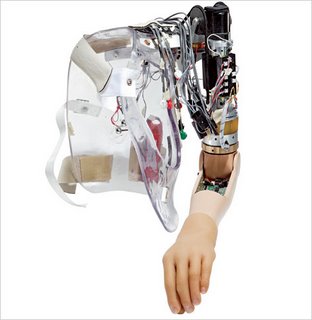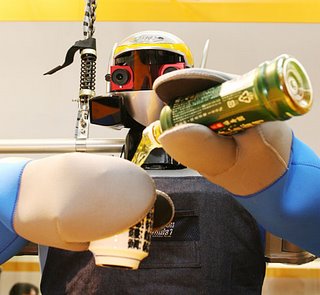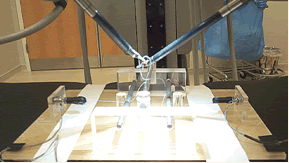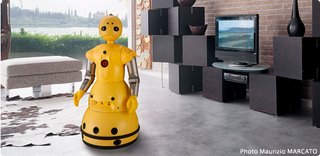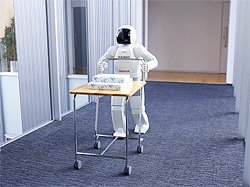Babies With Robots

"Infants with Down Syndrome, cerebral palsy, autism and other disorders can have mobility limitations that disconnect them from the ongoing exploration that their peers enjoy."
“If these infants were adults, therapists would have options of assistive technology such as power wheelchairs,” James C. (Cole) Galloway, associate professor of physical therapy says.
"The tiny robot is ringed with sensors that can determine the obstacle-free roaming space, and will either allow infants to bump obstacles or will take control from the infant and drive around the obstacle itself. The next prototype, UD2, will build on the current technology to provide additional control to a parent, teacher or other supervising adult."
Obviously the next step would be to make a giant car-crushing biped with a little baby seat inside. Don't worry - the giant baby-driven monster will never be allowed to escape into a busy downtown to rip corners off sky scrapers and toss city buses through plate glass windows.
Babies learn to ride robots at UD




































